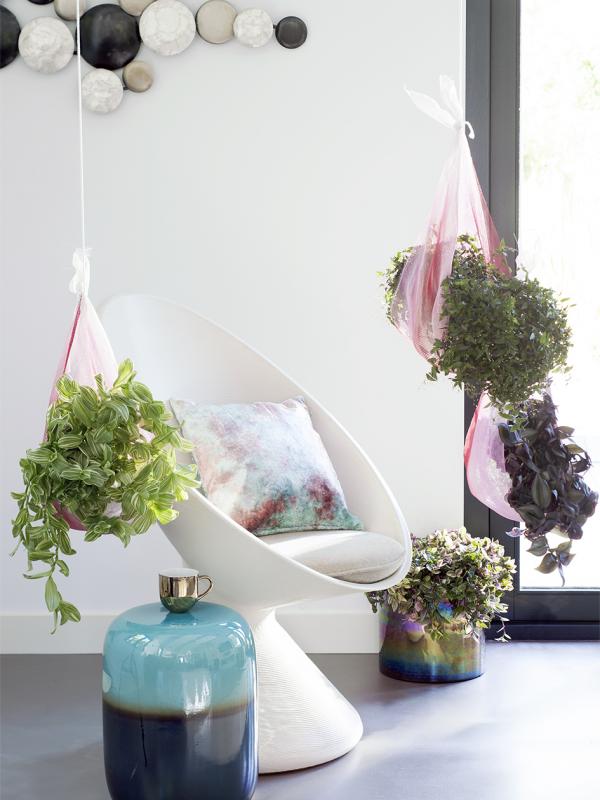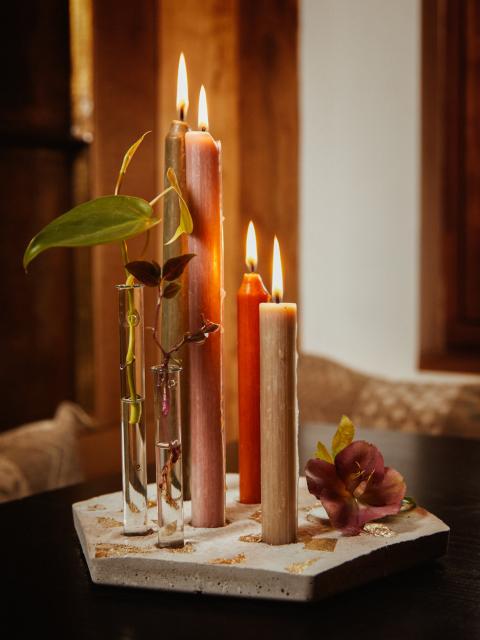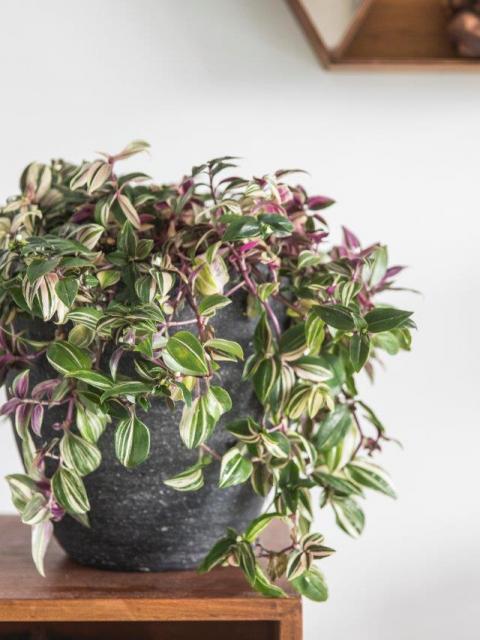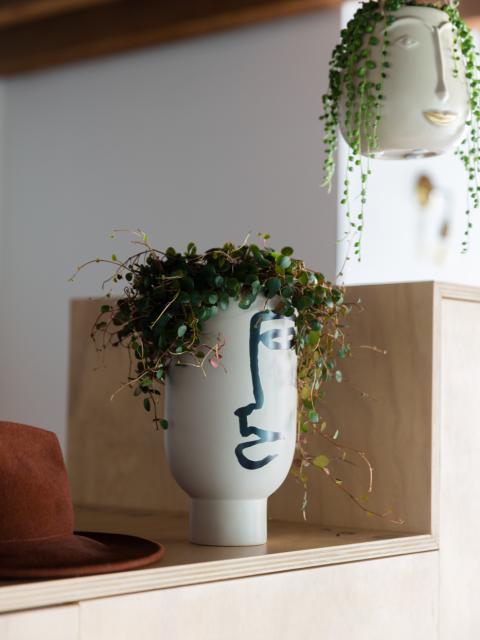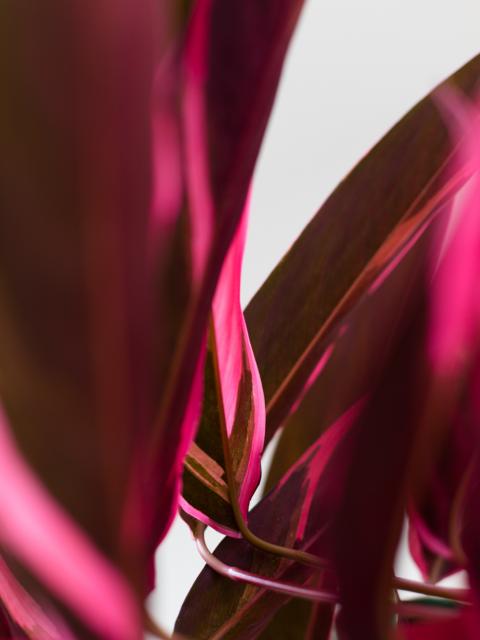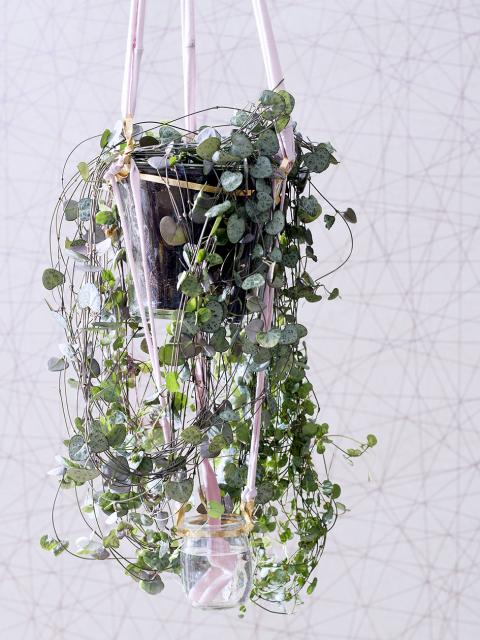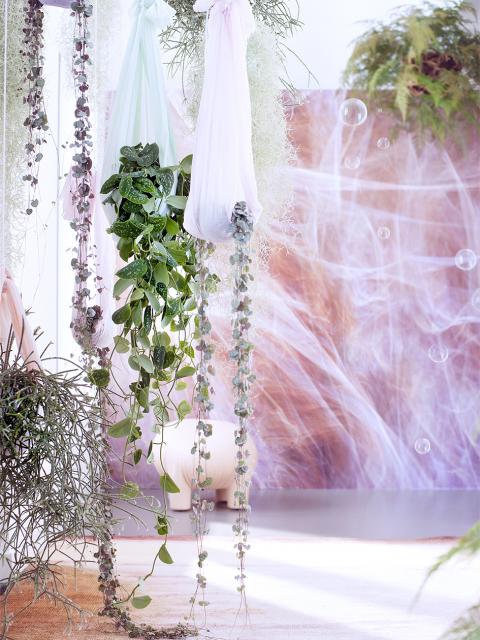Colours and shapes
Full and rich - those are the first words that jump to mind when you come face to face with a Tradescantia. This hanging plant grows vigorously and quirkily, with zig-zagging stems and spear-shaped leaves with a hint of pink or purple, silver or gold. To the touch, their leaves feel just the way you'd expect them to: juicy and surprisingly soft. The flowers are indigo, white or pink, but the beauty of this houseplant lies in the colourful leaves that can range from smart green to psychedelic purple in one plant.
Symbolism
The story of Tradescantia derives from its nickname in the Middle Ages: Wandering Jew. There are various versions of the story, but they all boil down to the fact that there was said to be a man (sometimes he's called Cartaphilus, sometimes Malchus and sometimes Ahasuerus) who has been alive since Jesus’s crucifixion and must remain alive until the Messiah returns to Earth. The element of immortality points to the fact that this houseplant has a very optimistic nature and does indeed wander all over the place if you look after it well.
Origin
Tradescantia, also known as the inch plant, and is native to North and South America. There are around 60 species, of which most are hanging plants, although there are also a few that grow upwards. Although it’s not a succulent, the stems are able to store a fair amount of water. That makes Tradescantia quite forgiving if you forget to water it from time to time. The plant was named after John Tradescant Senior, a gardener employed by the English King Charles I, by his son John Junior, a botanist and explorer. The plant became a hit in the courts of Europe around 1662 and was found to be so easy to propagate that it is one of the few early houseplants that soon appeared in ‘ordinary’ living rooms as well.

